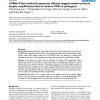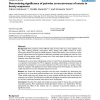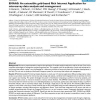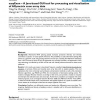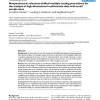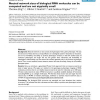BMCBI
2008
14 years 3 months ago
2008
Background: Pathogen detection using DNA microarrays has the potential to become a fast and comprehensive diagnostics tool. However, since pathogen detection chips currently utili...
BMCBI
2008
14 years 3 months ago
2008
Background: Event sequences where different types of events often occur close together arise, e.g., when studying potential transcription factor binding sites (TFBS, events) of ce...
BMCBI
2008
14 years 3 months ago
2008
Background: Microarray experimentation requires the application of complex analysis methods as well as the use of non-trivial computer technologies to manage the resultant large d...
BMCBI
2008
14 years 3 months ago
2008
Background: Mass spectrometry is a key technique in proteomics and can be used to analyze complex samples quickly. One key problem with the mass spectrometric analysis of peptides...
BMCBI
2008
14 years 3 months ago
2008
Background: Alternative RNA splicing greatly increases proteome diversity and thereby contribute to species- or tissue-specific functions. The possibility to study alternative spl...
BMCBI
2008
14 years 3 months ago
2008
Background: Protein sumoylation is an essential dynamic, reversible post translational modification that plays a role in dozens of cellular activities, especially the regulation o...
BMCBI
2008
14 years 3 months ago
2008
Background: In many research areas it is necessary to find differences between treatment groups with several variables. For example, studies of microarray data seek to find a sign...
BMCBI
2008
14 years 3 months ago
2008
BMCBI
2008
14 years 3 months ago
2008
Background: A major obstacle in treatment of HIV is the ability of the virus to mutate rapidly into drug-resistant variants. A method for predicting the susceptibility of mutated ...
BMCBI
2008
14 years 3 months ago
2008
Background: In gene expression analysis, statistical tests for differential gene expression provide lists of candidate genes having, individually, a sufficiently low p-value. Howe...
